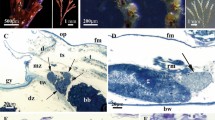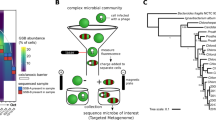Abstract
IN a recent paper1, data have been given which suggest that certain of the symbiotic bacterial viruses (bacteriophages) found in Salmonella typhi-murium undergo diphasic variation. The normally innocuous symbionts occasionally throw off lytic mutants which multiply actively and destroy the host bacterium. This leads to the liberation of virus particles, some of which, when brought in contact with a susceptible host bacterium, develop as symbionts and reproduce the original type of infection, while others are lytic in nature and multiply actively at the expense of the bacterium. Of the particles generated in this lytic cycle the majority are themselves lytic; but a minority—perhaps about 5 per cent— are potential symbionts. In cultures on solid medium the latter produce symbiotically infected and hence ‘immune’ bacteria which multiply unscathed and form the characteristic ‘solid centre’ of the plaque.
This is a preview of subscription content, access via your institution
Access options
Subscribe to this journal
Receive 51 print issues and online access
$199.00 per year
only $3.90 per issue
Buy this article
- Purchase on SpringerLink
- Instant access to full article PDF
Prices may be subject to local taxes which are calculated during checkout
Similar content being viewed by others
References
Boyd, J. S. K., J. Path. Bact., 53, 445 (1951).
Burnet, F. M., J. Path. Bact., 33, 637 (1930).
Author information
Authors and Affiliations
Rights and permissions
About this article
Cite this article
BOYD, J. Mutation in a Bacterial Virus. Nature 168, 994–995 (1951). https://doi.org/10.1038/168994a0
Issue date:
DOI: https://doi.org/10.1038/168994a0



